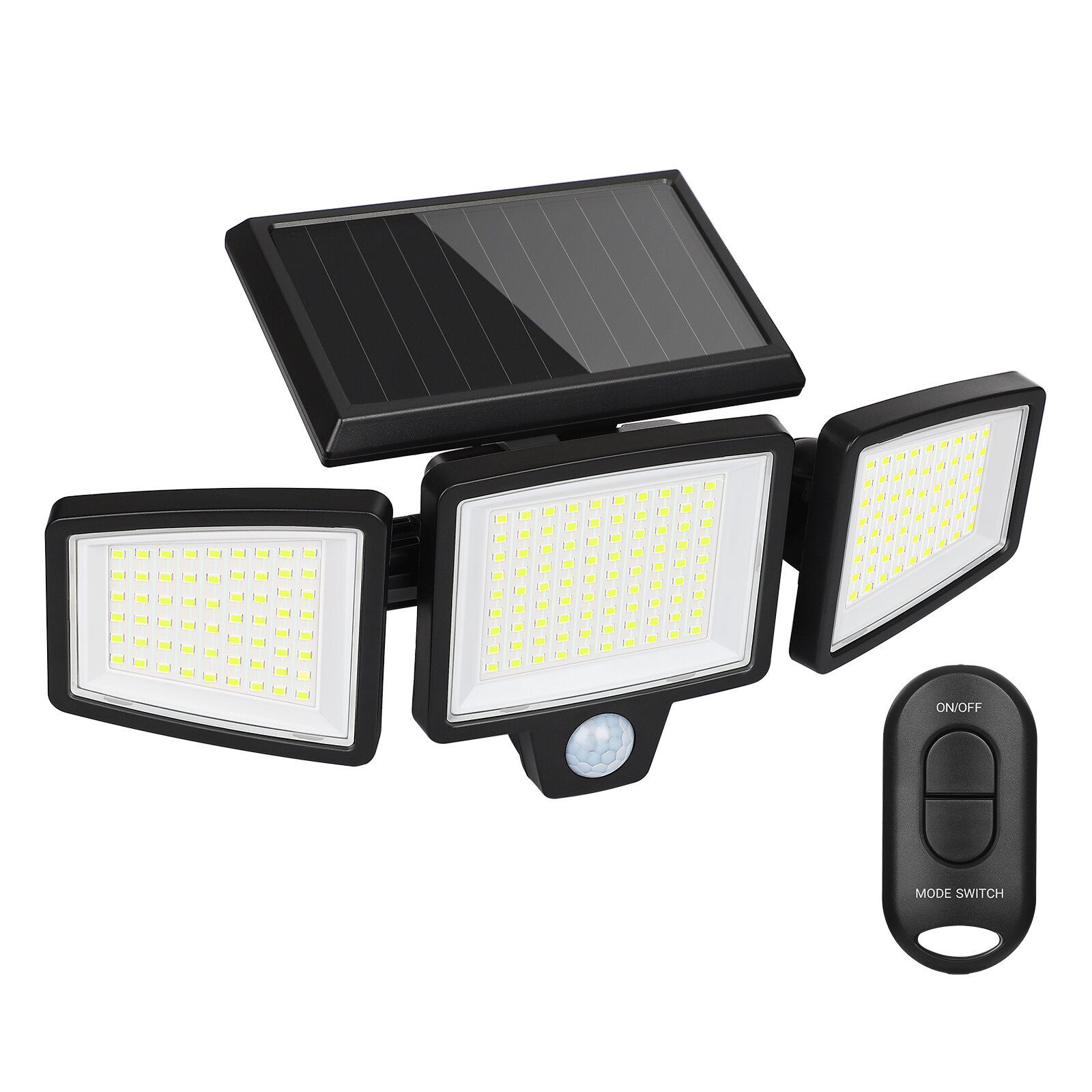To turn on a solar light without a remote, locate the manual power button on the light and press it. Now, i will provide a well-rounded introduction.
Table of Contents
Solar lights are an eco-friendly and efficient way to illuminate outdoor spaces, using the power of the sun to generate light. However, sometimes the remote control for these lights may get misplaced or stop working. In such situations, it is essential to know how to turn on solar lights without a remote.
This article will provide you with a concise guide on how to easily activate your solar lights without the need for a remote control. By following a few simple steps, you can ensure that your outdoor area stays well-lit, even if you can’t locate the remote control. So, let’s get started and learn how to activate solar lights without a remote control effortlessly.

Credit: www.wayfair.com
Solar Light Control Methods
Solar lights can be turned on without a remote using various manual methods. One way is through an on/off switch, allowing you to control the light’s operation. Another method is utilizing the built-in light sensor, which automatically turns on the light when it detects darkness.
Adjusting time settings is also an option, enabling you to schedule when the solar light turns on and off. Additionally, there are alternative techniques available, such as employing a smartphone app to control the light remotely. For those with smart home integration, the solar light can be seamlessly connected to the existing system.
Lastly, connecting the light to a motion sensor will activate it whenever movement is detected. With these different options, turning on solar lights without a remote is easily achievable.
Step-By-Step Guide For Manual Control
To turn on a solar light without a remote, follow this step-by-step guide for manual control. Start by locating the solar light’s on/off switch, which is usually located on the back or bottom of the light. Once you find the switch, flip it to the “on” position to activate the light.
If you want the light to automatically turn on and off based on the surrounding light conditions, you can adjust the light sensor. Look for a small dial or switch labeled “sensitivity” or “lux” and adjust it accordingly. To set the desired time for the light to turn on and off, look for a timer dial or switch.
Rotate the dial or flip the switch to the desired time setting. With these simple steps, you can easily control your solar light manually without the need for a remote.
Utilizing A Smartphone App For Remote Control
To turn on your solar light without a remote, you can utilize a convenient smartphone app for remote control. This app brings numerous benefits, allowing you to control the light easily. First, download and install the app on your smartphone.
Next, pair the app with your solar light through a simple process. Once paired, you can adjust settings and control the light directly from your phone. With the app, you can conveniently turn the solar light on or off, adjust brightness levels, and even set timers for automatic operation.
The smartphone app provides a user-friendly interface that offers more flexibility and convenience compared to traditional remotes. Take advantage of this technology to effortlessly control your solar light without the need for a physical remote.
Integrating Solar Lights With Smart Home Systems
Integrating solar lights with smart home systems offers several advantages. One of the key steps is checking the compatibility of your solar light with the smart home system you have. Once confirmed, you can connect the solar light to the smart home hub seamlessly.
From there, you can control the light using voice commands or home automation. This integration eliminates the need for a remote control, making it easier and more convenient to operate the solar light. With voice commands, you can simply instruct the light to turn on or off without having to manually press any buttons.
Home automation also allows you to schedule when the solar light should be turned on or off, providing added flexibility and energy efficiency. Incorporating smart home technology with solar lights enhances the overall functionality and convenience of your home lighting system.
Installing A Motion Sensor For Independent Operation
Installing a motion sensor allows independent operation of solar lights. Motion sensors bring numerous advantages, including enhanced security and energy conservation. To select the appropriate sensor for your solar light, consider the detection range and sensitivity, as well as the lighting requirements.
Mount the motion sensor in a location where it can accurately detect motion. Carefully configure the sensor to meet your desired operational needs. Ensure that it is set to turn on when motion is detected and to remain on for the desired duration.
Avoid common errors, such as placing the sensor too close to heat sources or obstructing its field of view. By installing a motion sensor, you can enjoy the convenience and efficiency of your solar light without the need for a remote control.
Frequently Asked Questions
Is There A Switch To Turn On Solar Lights?
Yes, solar lights do have a switch that you can turn on.
What If I Lost My Led Light Remote?
If you have lost your led light remote, don’t worry! Here are a few steps you can take to resolve the issue. First, check if the manufacturer offers a replacement remote. Many brands have customer support services and online stores where you can order a new remote.
If this is not an option, try searching for a universal remote that is compatible with your led lights. Universal remotes are widely available and may work with a variety of devices, including led lights. Another alternative is to check if your led lights have manual controls on the light itself.
Some models have buttons or knobs that allow you to adjust the settings without a remote. Lastly, consider contacting a local electronics store or an electrician who may be able to assist you in finding a solution.
How Do You Activate Solar Lights Without Sun?
Solar lights require sunlight to charge their batteries, but there are ways to activate them without direct sunlight. One option is to use artificial light sources such as incandescent bulbs or led lights near the solar panels. These lights can provide enough energy to activate the solar lights.
Additionally, you can also cover the solar panels with your hand or an opaque object to simulate darkness. This will trigger the solar lights to turn on automatically. However, keep in mind that the duration of the light emitted may be shorter since the energy source is limited.
It’s important to note that relying solely on artificial light sources may not provide the same level of brightness or longevity as direct sunlight. Therefore, it’s recommended to ensure the solar panels receive adequate sunlight for optimum performance.
Can You Manually Charge Solar Lights?
Yes, you can manually charge solar lights. Solar lights typically have a built-in rechargeable battery that stores energy from the sun. However, if you find that your solar lights are not getting enough sunlight to charge, or if you need to use them immediately, you can charge them manually.
To do this, you can use a usb cable to connect the solar light to a power source, such as a computer or wall outlet. Make sure to check the manufacturer’s instructions for the specific charging requirements of your solar lights.
Charging the lights manually can help ensure that they are ready to use whenever you need them, even if you don’t have immediate access to sunlight.
Conclusion
To sum up, turning on solar lights without a remote is a simple and cost-effective solution for illuminating your outdoor spaces. By following the steps outlined in this blog post, you can ensure that your solar lights are fully operational and providing the desired lighting effect.
Remember to check the power supply, clean the solar panel, check the battery connections, and adjust the settings accordingly. By understanding the working principles of solar lights and implementing the suggested troubleshooting steps, you can enjoy a well-lit outdoor area without the need for a remote control.
So, next time you find yourself without a remote, don’t worry! You now have the knowledge to make your solar lights shine bright. Happy lighting!

